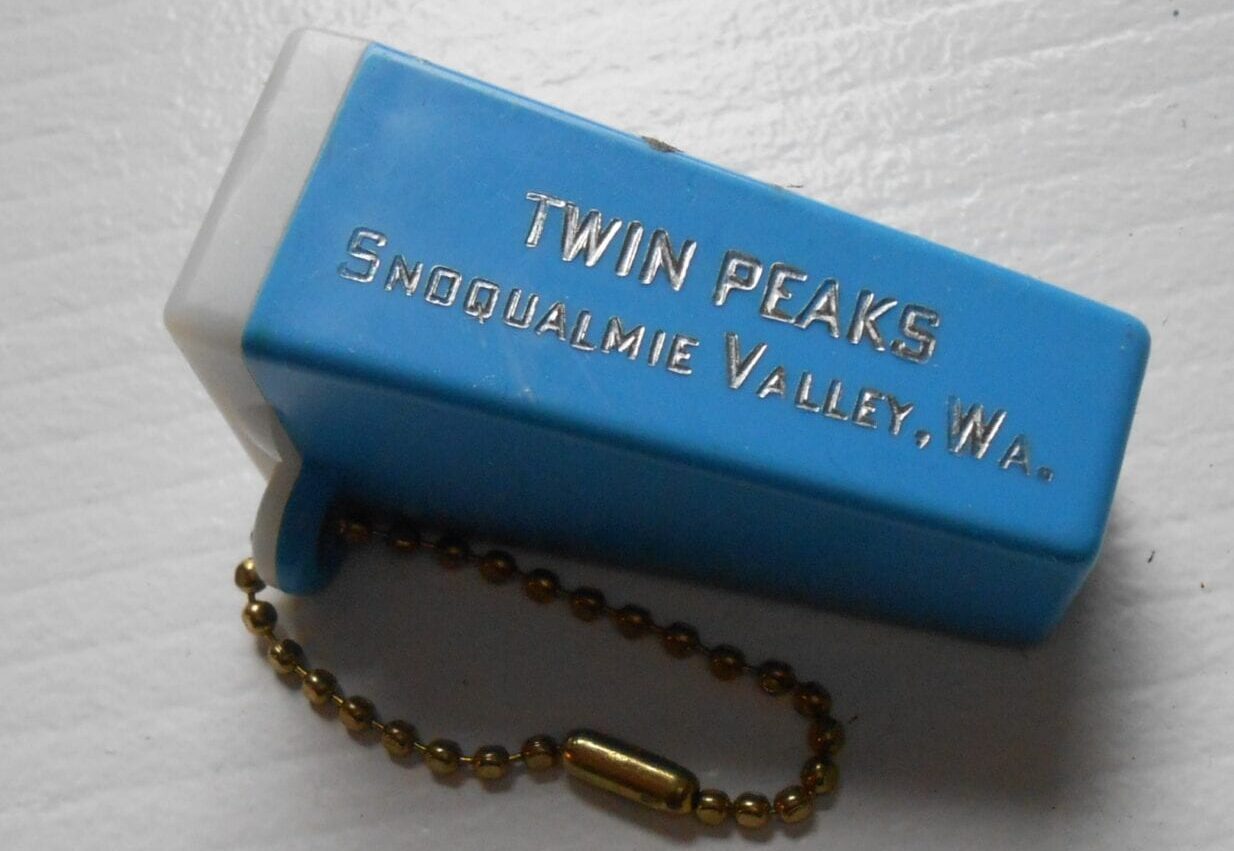Twin Peaks obsessives will find clues and connections to David Lynch’s work everywhere, but even hardcore fans were unlikely expecting a reference to Lynch’s work in the Final Fantasy VII: Remake, and yet, it might just be one of the most mind-bending Easter Eggs in video game history. This post will obviously contain spoilers for both the original Final Fantasy VII and Remake as well as all of Twin Peaks.
“We’re Not Gonna Talk About ‘Jenova’”
It is easy to overlook, but you can find it In Chapter 17, most clearly over Barret’s shoulder when he says “We who are born of the planet, with her we speak,” hidden within a large painted mural where the party rests in a tiny apartment within the Shinra corporation’s research facility towering over the city of Midgar. It’s there, among drawings of various birds, that you can find a forward-facing owl with two pointed wings that even look slightly like mountain peaks. Twin Peaks fans will instantly recognize the similarity between this and the owl cave symbol, but bears an even closer resemblance to the version that appears in The Return on both Mr. C’s playing card and Hawk’s map.
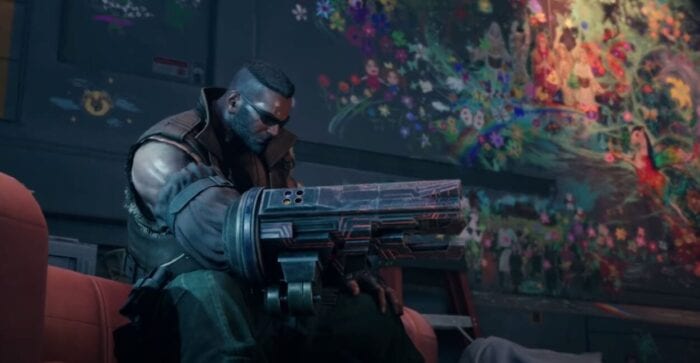
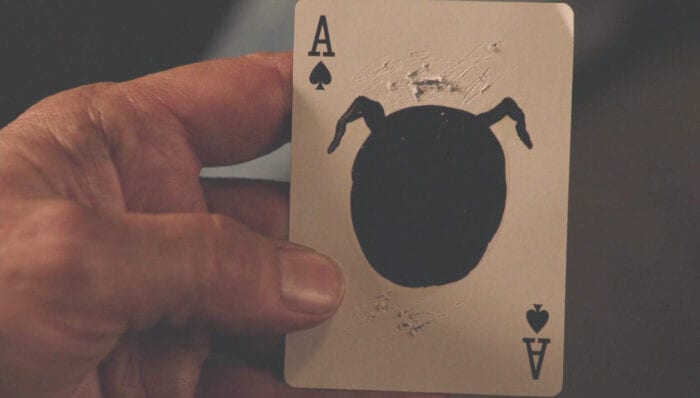
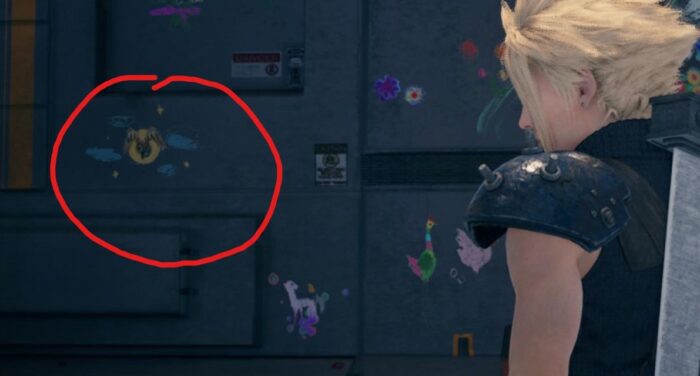
Pretty cool right? But does it mean anything, or is it just a clever and thoughtful reference? Turns out, this little image points to a number of similarities between Twin Peaks and Fantasy VII, aside from both of them reappearing two decades later with both highly anticipated and well-received reboots that manage to both please their fans and completely subvert their expectations. But in order to get to that, we need to talk about Judy.
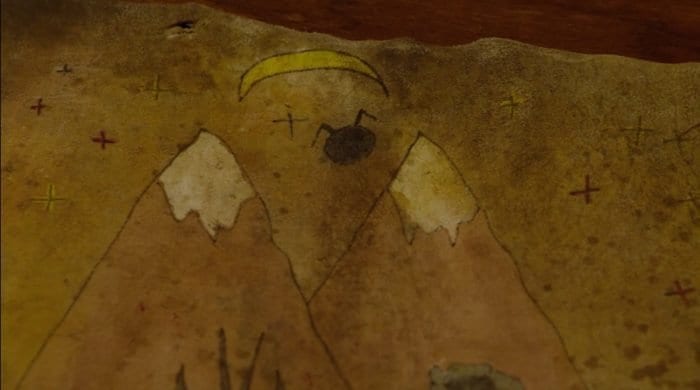
It is worth noting at the start where the symbol is located. It isn’t just a random piece of graffiti, or a hieroglyph on a cave somewhere. It was painted by Aerith, the last surviving Ancient, drawing numerous parallels to indigenous cultures. In the original game, the party is separated into detention cells, but in the Remake Aerith takes them to the room she was imprisoned in with her mother, still full of her childhood drawings, and an entire wall painting that is full of clues to the game’s lore. In many ways, the mural is not unlike Hawk’s map, which follows in the tradition of Native American ledger painting.
So what does this have to do with Judy? When we get a better look at the mural, we see it depicts the arrival of Jenova, 2000 years prior to the events of the game, which brought catastrophe to the planet. We know Jenova is a kind of space monster, somehow neither living or dead, but pulling the strings of the plot through the devotion of Sephiroth, who refers to Jenova as “Mother.”

In Twin Peaks: The Return, we are reintroduced to the mythology of the Black Lodge and its otherworldly inhabitants, and presented an origin story for the series’ main antagonist, BOB, a demon brought into this world when the detonation of the first atomic bomb, Trinity, introduced a powerful new evil upon the world. Through Lynchian visions, we see BOB spawned from a strange feminine entity, floating in some undefined space. Viewers also assume this entity is the same one summoned into the glass box, and also referred to by the American Girl in the Purple Zone as her “mother.”
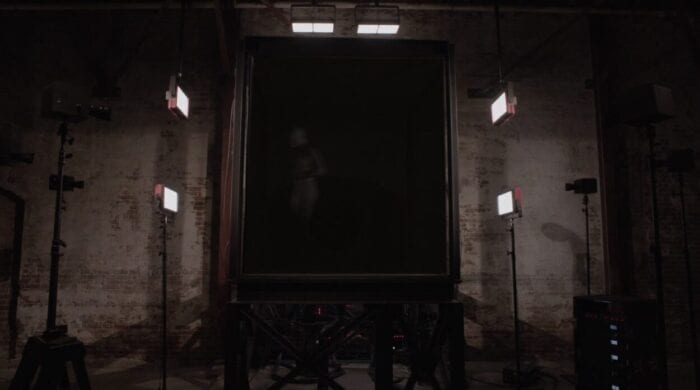
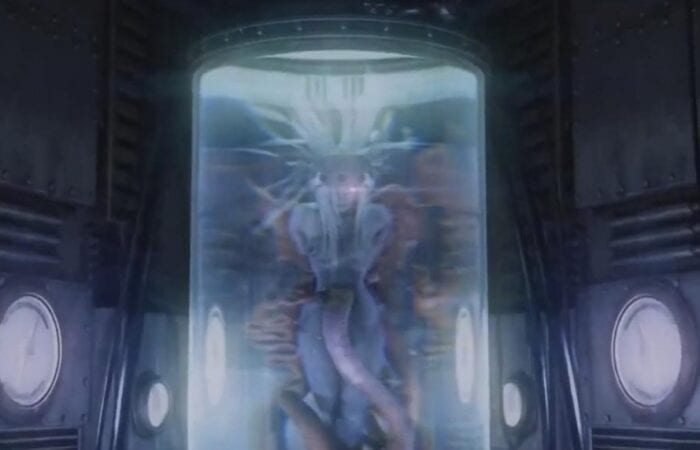
Some interesting similarities so far. But is the game simply trying to claim that Jenova and Judy are the same? Or at least, the same kind of entity? That might be a stretch, and also missing the point. Though it is fun to speculate that Jenova and Judy share some cosmic origin, there is much more meaning behind what they both represent.
“An Extreme Negative Force” Jenova & Judy as The Bomb
Lynch’s imagery is often evocative of archetypes, so it’s no wonder that a franchise that also frequently uses these archetypes would share some symbolism. Even then, it is hard to deny the eerie similarities between Judy as she appears in The Return and Jenova’s original appearance in the 1997 game. There is already a lot to unpack between Sephiroth, Jenova, and Shinra, from the numerous connections to nuclear energy, as well as the contradictions of energy production and war profiteering and how scientific progress gets caught between the two, without looking to Twin Peaks at all, but by connecting Judy and Jenova, the Remake highlights its most significant historical influence; the atomic bomb.
Manga, anime, and Japanese video games have long been notable for revealing how the bombings of Hiroshima and Nagasaki have shaped the Japanese consciousness. Final Fantasy’s recurring mega-boss monsters like Ultima Weapon are inspired by kaiju films like Godzilla, often recognized for their cultural significance to post-war Japan. The world of Final Fantasy 7 is unique even within the franchise for being considerably more grounded in reality than its predecessors, or even any of the following entries (with the exception of the most recent Final Fantasy XV, itself an homage to American road trip films). Previous Final Fantasy games were mostly what you’d expect from the genre: swords and dragons and wizards in a medieval, Tolkien-esque world. The series started taking steps into new worlds with the steampunk industrial setting of Final Fantasy VI and its not-too-subtle suggestion that industrialized colonialism would bring on the apocalypse, and expanded into more futuristic aesthetics in later installments.
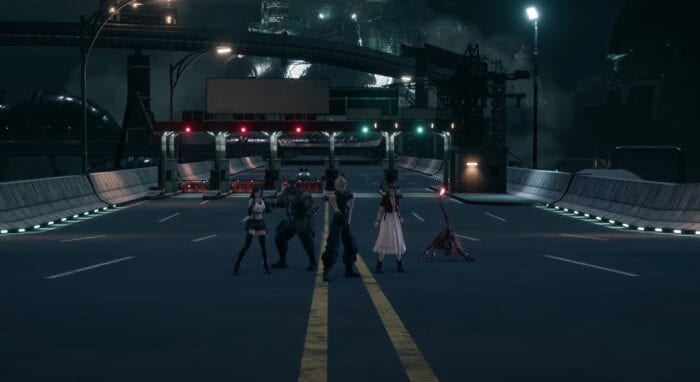
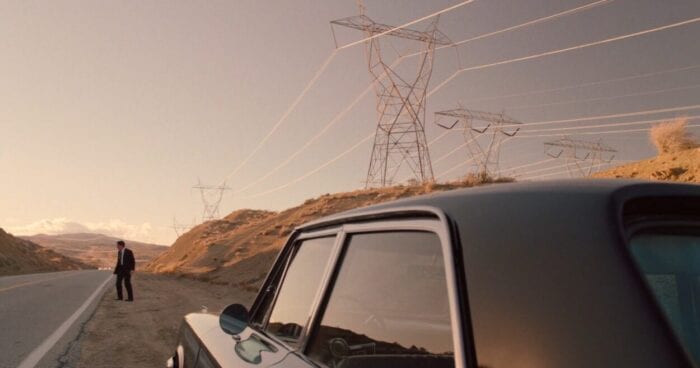
Final Fantasy 7’s immaculate blend of fantasy elements with grounded 20th century realism is crucial to its popularity and longevity. The Remake is noteworthy for sticking so closely to the original’s aesthetic, and serves to really highlight how much post-war technology and design shaped the look and design of the clothing, architecture, and technology, creating a fantasy world out of the trauma of real-life Japan. To contrast the realism, Final Fantasy 7 emphasizes its fantasy elements through exaggeration, Cloud’s comically oversized sword is a perfect example. Plenty of the metaphors are over the top, like the hyperbolic structure of the city of Midgar itself. The slums aren’t just beneath the city, but rather the rich and middle class built their city suspended hundreds of feet above the poor and working class, a physical manifestation of the symbolic disparity in class wealth.
In this sense, Jenova is an inversion of divinity—her name is one letter away from Jehova, after all—and her arrival precedes the game’s events by two thousand years. Shinra’s obsession with Jenova and the subsequent quest for “Neo-Midgar” is equally comparable to the uncomfortable relationship between evangelicalism and the industrial war complex.
Twin Peaks’ suggests that the detonation of Trinity allowed Judy’s influence to seep into our universe. Like Judy, Jenova serves as a stand-in for misplaced zealotry as well as unfettered technological progress, but her arrival also literally ushers in the apocalypse, part of which is accomplished through Sephiroth’s ritualistic murder of Aerith. As if the original game wasn’t clear enough, a movie sequel, Advent Children, shows the children of Midgar suffering from a radiation-like sickness caused directly by Jenova’s spiritual essence recirculating through the lifestream of the planet.
“Once We Cross, It Could All Be Different”: Sephiroth’s Remake vs. Agent Cooper’s Return
We’ve established that Judy and Jenova share a dark past. But what about the future? The Return establishes that at least some version of Twin Peaks takes place within a dream, though leaves the question of the dreamer intentionally ambiguous. There is at least some consensus that the universe in Part 18 is likely a creation of Judy’s, a trap set for Laura that Cooper discovers too late.
In the original Final Fantasy VII, the player faces three different versions of Jenova in boss battles: Jenova Birth, followed by Life and Death. However, in the Remake, we fight Jenova once: Jenova Dreamweaver. Cloud dismisses this as a hallucination caused by Jenova, a power granted to her in the original game as well. But there is more going to the world of the Remake, as the final battle against Sephiroth is preceded by a bizarre standoff against arbiters of fate: giant shadow figures that represent the legacy of the original story. With their defeat, the rest of the story can go in any direction, no longer bound to its past. This gets interesting when we realize that both Sephiroth and Aerith are somehow aware they are reliving this adventure for at least the second time. Similar to Mr. C’s quest to reunite with Judy, Sephiroth appears undeterred by the limits of time and space when it comes to reuniting with Jenova.
Cloud and Sephiroth’s personal conflict is the dramatic centerpiece to a global struggle between good and evil, but like Leland and Laura in Twin Peaks, their shared trauma is both a direct and indirect result of humanity’s careless quest for self destruction. And like Cooper, Cloud faces an existential crisis when confronted with the possibility that even his good intentions are part of a bigger plot outside of his control. Cloud, though convinced he was righteously on his own hero’s journey, was instead lured into a trap to help Jenova and Sephiroth to achieve their goals of world destruction. If only there was a way of bringing a Playstation into the Black Lodge during those 25 years.
Let’s dig a little deeper. After all, both Twin Peaks and Final Fantasy share an esoteric backbone with references to black magic and kabbalah riddled throughout both franchises. While the former is a little more obscure in their reliance on it as a mythology, leaving it mostly to the background in Frost’s books and fan speculation, Final Fantasy is the opposite, magic and occult imagery are right there on the surface, usually as a stand-in for more grounded concepts like technology or warfare. Critics and fans either downplay any significant references as little more than aesthetics, while direct connections are vague. Final Fantasy summons—like Shiva and Gilgamesh, for example—are often completely unrecognizable from their namesakes.
But both versions share another surprising theme with the unusual creation of doppelgangers through magic; in Final Fantasy 7, it is through clones, soldiers infused with Jenova’s DNA who later participate in the reunion, and Twin Peaks has both doppelgangers and tulpas. Cloud, as another one of Shinra’s experiments, maintains part of Jenova’s essence, which gives him the strength he needs to take on Sephiroth. Yet as far removed from humanity as Sephiroth is, Cloud is as distant from Jenova’s destructive essence. And yet, his quest ultimately proves to be part of the Jenova’s plan. If we’re looking at Jenova and Sephiroth’s relationship through this lens, Sephiroth is the conduit between Jenova’s conscious will and the physical world, and thus tasked with reuniting the pieces of her scattered throughout the world. Sephiroth’s plan is to damage the planet enough to absorb spiritual energy, which Jenova consumes like a parasite.
Upon closer examination, Final Fantasy 7 is full of doppelgangers. We find out halfway through the game that every iteration of Sephiroth we’ve met was actually a different clone. Cloud himself is a doppelganger of Sephiroth, but there is also an interesting Laura/Maddie shock in the original game when we first see Zack in Cloud’s place during a flashback, an exact polygon-replica except for dark long hair instead of blonde spiky hair.
Is Sephiroth finding a way back into reality through the dream world? Maybe he is taking a page out of Cooper’s playbook, spending the last twenty five years in a black lodge of his own, but has now found a way to break out of a time loop—perhaps by saving Zack, a missing piece of the Jenova Reunion puzzle—much like Cooper created a new timeline by saving Laura. Or is the dreamer actually Aerith, the true hero of the original game, attempting to escape her own fate?
“Aerith Is The One”: Echoes of Laura Palmer in Aerith Gainsborough
Twin Peaks places a central focus on Laura Palmer, subverting the trope of a dead girl as a catalyst for dramatic narratives by giving her a complex story and grounded personality. Final Fantasy 7 originally gained notoriety for its own use of the dead girl trope to great effect, often recognized by gamers as the first time the death of a video game character carried enough emotional weight to bring the player to tears.
Aerith was a playable character in a game where losing a ‘life’ in the traditional video game sense was reversible, where a player unaware of the upcoming twist could actually have invested a significant amount of time for strategic purposes. And while her death was a major event in the history of video games, the Remake is giving her a new life. Much like Lynch gave Laura Palmer an evocative, three dimensional portrait with Fire Walk With Me, Final Fantasy is (possibly) freeing Aerith from her place as simply a prop. In fact, The Remake goes out of its way to give a spotlight to all of the women in its original cast, as well as firmly recontextualizing its past takes on gender and sexuality, which, like Twin Peaks, were surprisingly progressive, if flawed, for its time.
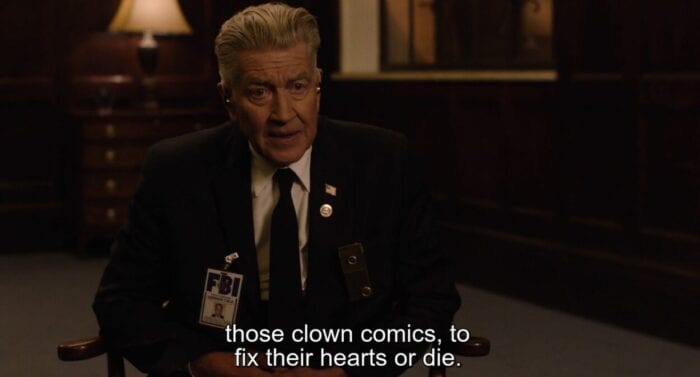
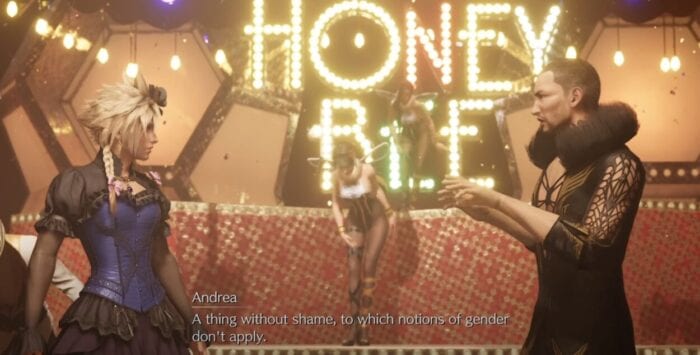
By invoking Laura through the owl symbol, Aerith is challenging the expectations of fans and audiences and reclaiming the ending and triumph she deserves. After all, it was her prayer to Holy that saved the planet, but much like Laura’s sacrifice by the White Lodge, she wasn’t necessarily in control of that decision. Much like Cooper’s failure to save Laura despite escaping the Black Lodge, Cloud continues to find his victories are ultimately in vain, and even sometimes part of the villains’ larger plan. With the Remake, Aerith steps forward into the unknown, and like Laura, she is threatened mostly by the angels and demons on either side of the battle.
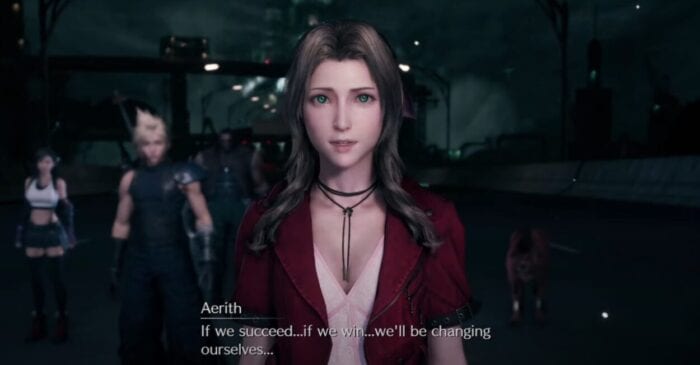

Or perhaps the symbol is a way of the creators acknowledging their complicity in their violence against Aerith with a subtle clue to another series that liberated their heroine as another way of saying that resurrecting Aerith for the Remake does not discount her death and sacrifice in the original. She remembers her trauma, like Laura in the Red Room: “I am dead; yet I live.”
The Final Fantasy series has always been about mishmashing genres and cultures with flashy creativity, taking American and European influences and playing with them and giving us brand new worlds to discover. Of course, the second part to the Final Fantasy VII: Remake is still yet to come, and all of my speculation could be wildly off. Let’s hope that leaving a cliffhanger for twenty five years isn’t one of the Twin Peaks experiences the Final Fantasy VII team are trying to recreate. Still, there’s no denying that the owl in Aerith’s mural is certainly more than it seems.



